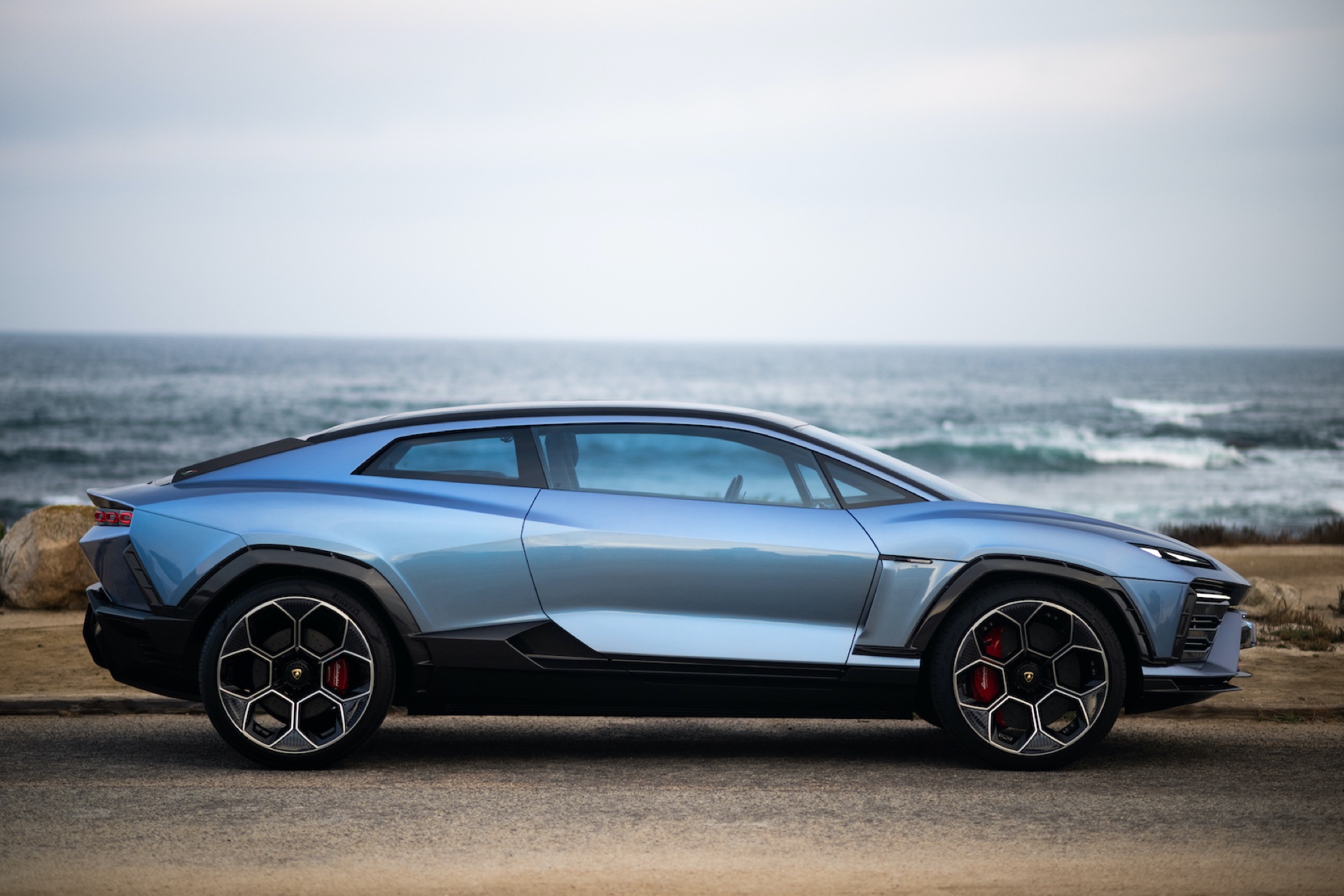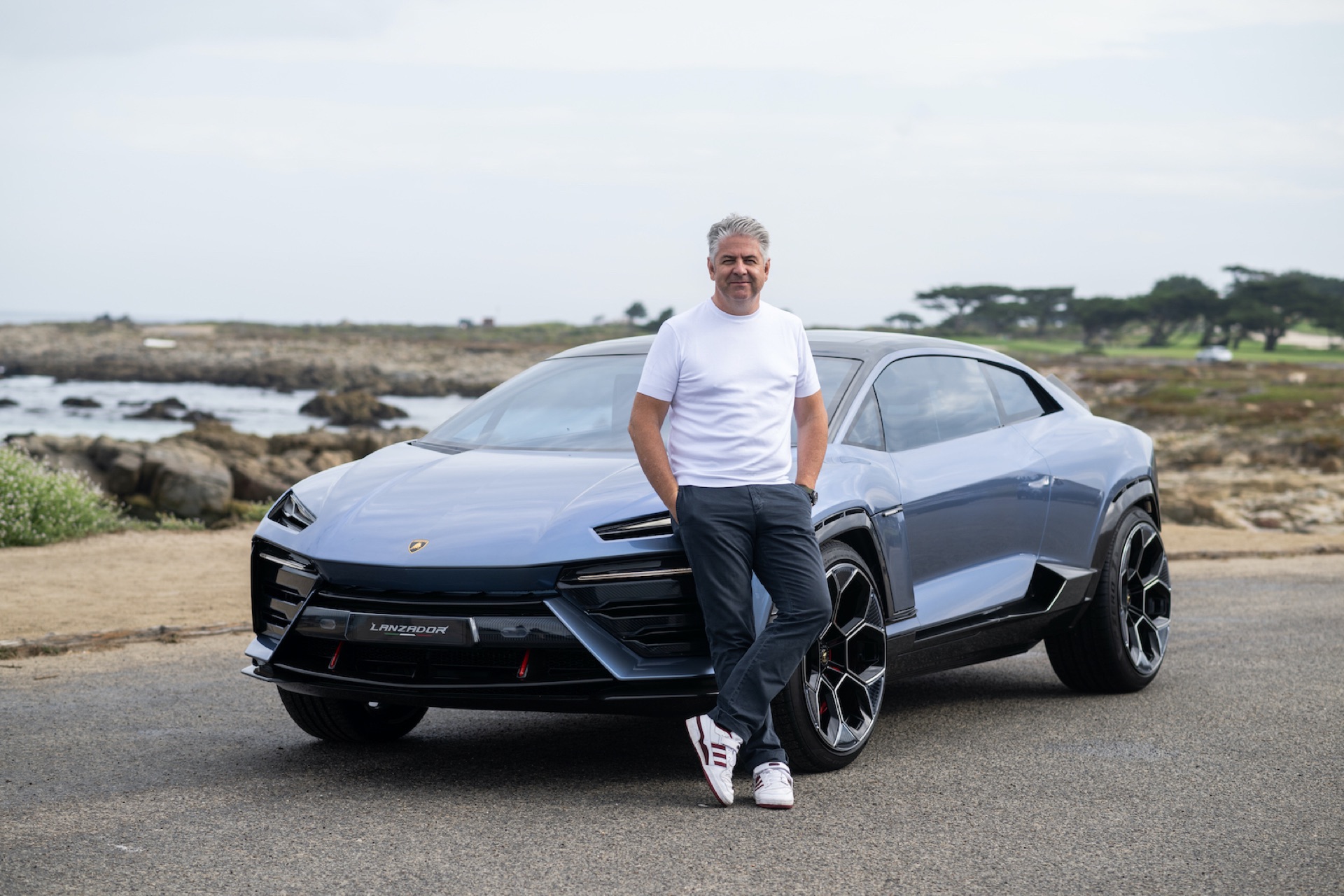Lamborghini is also going electric—step by step and deliberately slowly. The eye-catching debutant is named Lanzador and will only hit the market in 2028. We have already taken the first prototype for a spin.
The feedback from the fan community after the world premiere of the Lamborghini Lanzador was clear: thunderous applause. Much like the Urus study, Lamborghini’s first electric model was celebrated mainly for its design. But even if some interested parties around the millionaire enclave of Pebble Beach would have been all too eager to pull out cash and prepare electronic transfer forms, it will take some time—almost five years, to be precise—before the car becomes a motoring reality as Lamborghini’s first fully electric model. There’s plenty of time to dream and develop, and now is precisely the right time to clock the first miles on its formidable 23-inch wheels. Where better to do that than on the iconic 17-Mile-Drive, the charismatic automotive promenade that uniquely unites California and the Pacific?
Getting into the blue Lanzador is a slow and cautious affair, as one must take care not to damage the one-off, especially since it’s raining this morning on the coast of Monterey. While Chief Development Officer Rouven Mohr briefly points out that the prototype lacks a windscreen wiper, the technicians around him are clearly more flustered due to the unforeseen rain.
However, with a push of the starter button on the futuristic centre console that separates the driver and copilot at chest height, the instruments come to life. If you didn’t know better, you’d have no doubts that you were in a space glider from a distant galaxy. Unlike its big brother Urus, the Lamborghini Lanzador will have only two doors despite its four individual seats. There’s ample space in the back, yet clambering into the second row will likely be a rarity for most customers. The interior of the crossover will be more sustainable than any Lamborghini before it.

Details such as the dashboard, seats, and door panels are made of fine Merino wool, while the coloured thread comes from recycled nylon. Most of the invisible plastics, like the foam of the sports seats, are made from 3D-printed recycled fibres. The fibres used for the centre console and door panels are also made from regenerated carbon—a new, two-layer composite material.
Despite its focus on sustainability, Lamborghini still opts for leather. However, this leather is sustainably tanned, using water from olive oil production which needs to be treated in wastewater plants due to its high acidity and antimicrobial effect. This residual water can also be reused by chemical manufacturers for tanning agents. Additional resources are saved by a newly developed 3D printing process for plastics, from which, among other things, the seat foams are made. The printing material for the Fused Deposition Modelling comes from recycled waste like used plastic bottles and can be recycled again after its usage period. In the two display caves in front of the driver and passenger, numbers and animations come alive as the colossus sets itself almost silently into motion.

The creaking and cracking sounds are typical for such an early prototype, which is more designed to garner applause on show stages rather than to clock some spirited miles. The Lamborghini Lanzador, with its bluish shimmering look, can do both. With the gas pedal pushed further down, we head towards Spanish Bay, while to the left, the churning Pacific seems to be displaying its first enthusiasm for this North Italian wonder. “Be careful when steering,” Rouven Mohr calmly explains, “it’s a drive-by-wire system that recalculates depending on the steering input. So steer slowly.” Said and done.
The whirring of the electric drive gets louder, the speedometer shows 40 km/h. Later in real operation, the planned output of more than 1,000 kW/1,360 horsepower should allow for top speeds approaching 300 km/h. That’s quite a pace for an electric model that takes its name from a bull that delighted Madrid in 1993. After next year, when all three current series will be electrified as plug-in hybrids, the Lanzador will become the first all-electric model from 2028 with a bull emblem. Shortly thereafter, the next generation of the also electric Urus is likely to follow. “With the fourth model, we are opening a new vehicle segment: that of the Ultra GT,” explains Lamborghini CEO Stephan Winkelmann, “this will offer customers an unparalleled new Lamborghini driving experience thanks to groundbreaking new technologies.”

On the 17-Mile-Drive, the test subject can only cruise leisurely as Rouven Mohr cycles through various programs and functions using the futuristic-looking controller. Later in the production version, the different driving modes can be varied, thereby also changing the way more than a megawatt is actively transmitted to the road via the torque-vectoring system. The power comes from a roughly 100 kWh battery pack situated between the axles—the first performance data are currently being specified in a requirement specification. A variable air suspension system with rear-wheel steering is set. “For us, electrification does not mean restriction, but an intelligent opportunity to develop more power, performance, and driveability,” explains Rouven Mohr.
Much dedication is put by the Lamborghini engineers into adaptable aerodynamics, as the elaborate airflow is supposed to hide subtly behind body elements, unlike the sports cars. Similar to the Huracan and Aventador, the electric SUV also gets aerodynamic modules that, depending on the driving program, speed, and pace, provide either maximum downforce or minimal air resistance to generate more range. The prototype can already do this at the push of a button. The flexible aerodynamic system uses, among other things, the front air flap along with a movable splitter, which opens the brake cooling channels and cooling fins as needed to achieve optimum performance. Optically concealed slats provide downforce without generating additional air resistance. Because despite all the power, the Lanzador must remain grounded. The same goes for Lamborghini fans. Don’t get carried away just yet, as it will still be a long five years until the Lanzador is available at dealers—a long time indeed.
































The biggest question for Lamborghini will be what they do with sound, as that’s what their typical driver most cares about, for some reason. I love the silent thrust of my electric, but some others wouldn’t.
This is really the challenge they’ll have to address. I guess we’ll all have to wait and see… or listen!